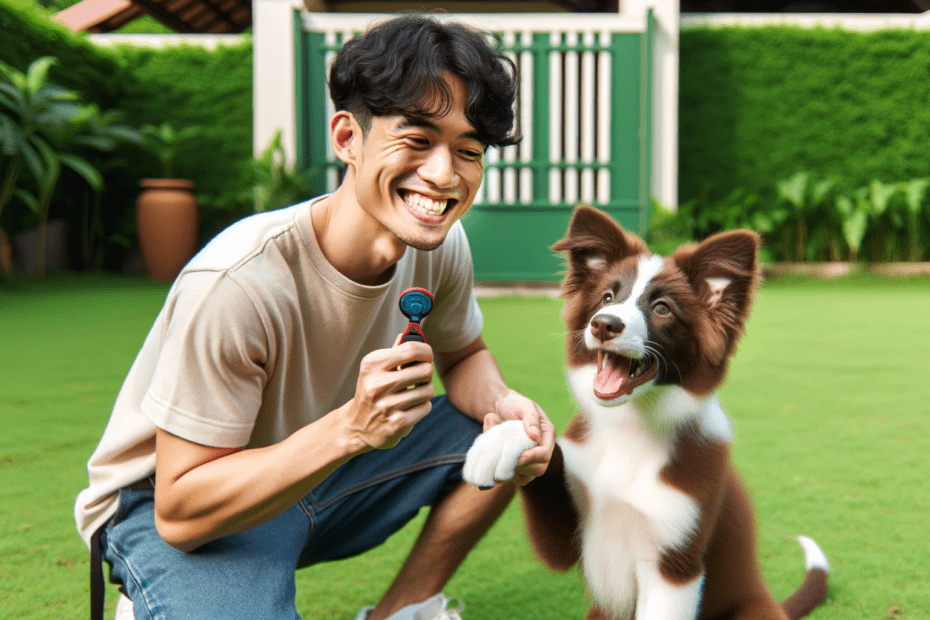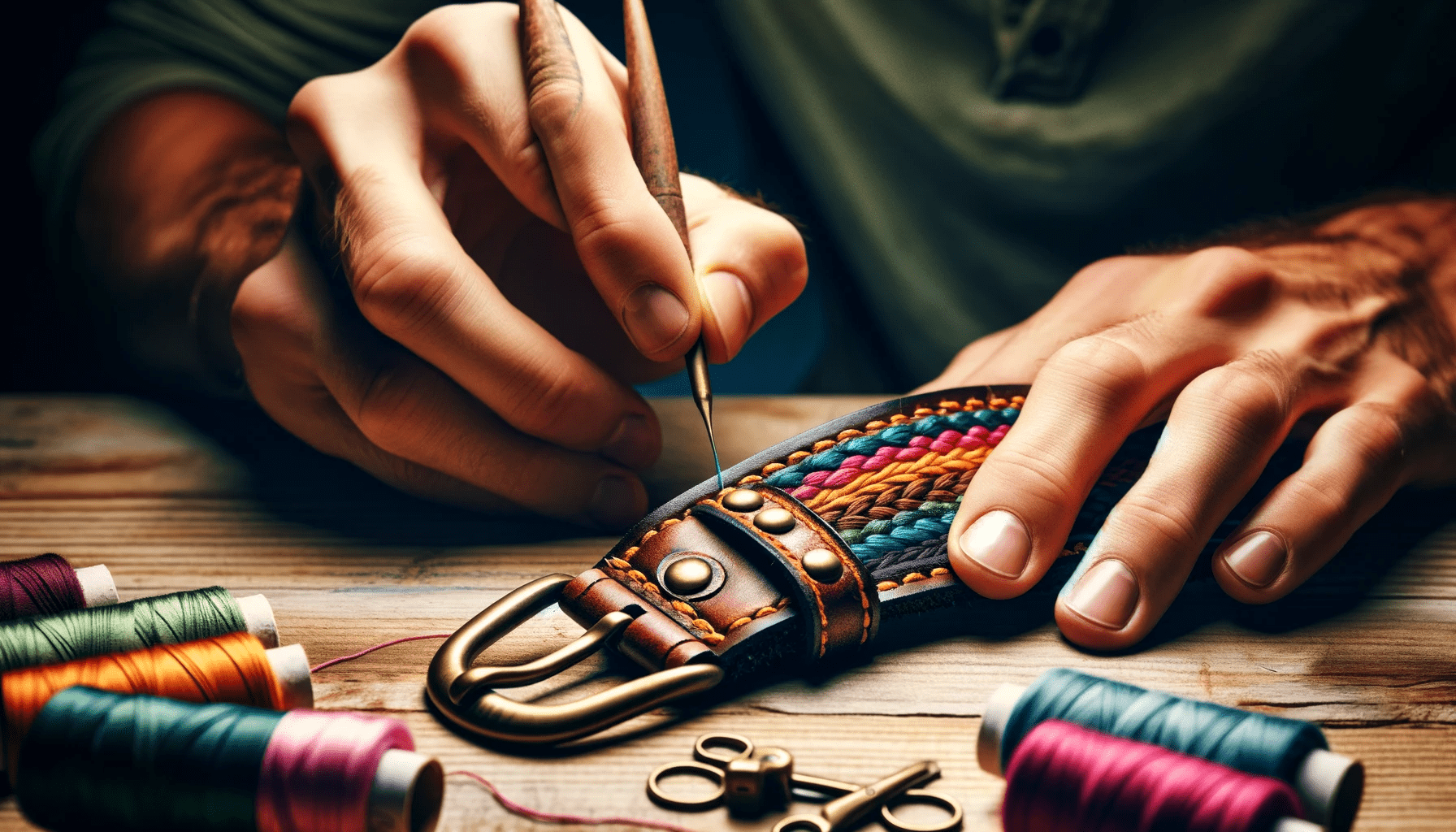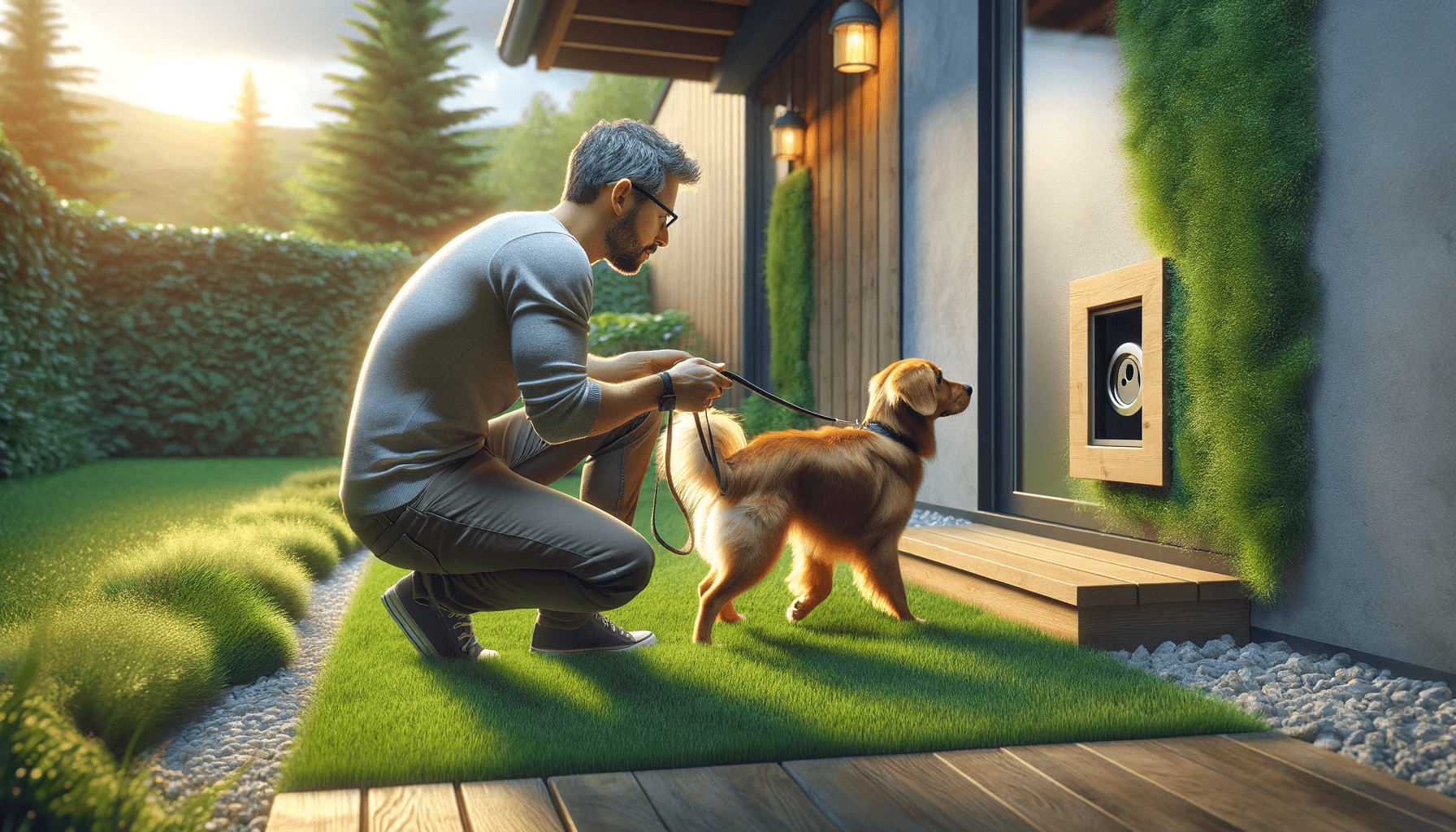If you want a confident and reliable puppy, clicker training is the key.
By using this method, you can build trust and effective communication with your furry friend.
Positive reinforcement is used to shape desired behaviors and teach new commands and tricks.
Clicker training is also effective in addressing behavioral issues and fostering confidence and independence in your puppy.
Consistency is crucial in this journey, but the results will be worth it.
Get ready to unlock your puppy's full potential!
Key Takeaways
- Clicker training is a positive reinforcement method that uses a handheld device that makes a distinct clicking sound.
- The clicker serves as a marker to let the puppy know they've performed the desired behavior correctly.
- Clicker training helps build trust and communication between you and your puppy.
- It reinforces reliability in your puppy's behavior and helps teach new commands and tricks.
Understanding Clicker Training Basics
To understand clicker training basics, you must first grasp the concept of using a clicker as a powerful tool for reinforcing desired behaviors in your puppy. Clicker training is a form of positive reinforcement training that relies on the use of a small handheld device that makes a distinct clicking sound.
This sound serves as a marker to let your puppy know that they've performed the desired behavior correctly. The benefits of clicker training are numerous. It's a highly effective and efficient method of training that helps establish clear communication between you and your puppy.
It allows for precise timing and accuracy in reinforcing behaviors, which leads to faster learning and better retention. Additionally, clicker training techniques are gentle and force-free, making it a safe and enjoyable training experience for your puppy.
By using the clicker as a tool, you can teach your puppy a wide range of behaviors, from simple commands like sit and stay to more complex tricks and tasks.
Building Trust and Communication Through Clicker Training
To build trust and effective communication with your puppy, clicker training is an invaluable tool.
The clicker serves as a clear and consistent way to mark desired behaviors, allowing your puppy to understand exactly what they're being rewarded for.
Clicker as Communication Tool
Building trust and effective communication with your puppy is made possible through the use of a clicker as a tool. The clicker acts as a clear and consistent signal to your puppy, indicating that they've performed the desired behavior correctly. This helps to establish a strong line of communication between you and your furry friend.
Here are three ways the clicker serves as a communication tool in clicker training:
- Precision: The clicker provides precise timing, allowing you to mark the exact moment your puppy performs the desired behavior. This clarity helps your puppy understand which actions lead to positive reinforcement.
- Focus: The distinct sound of the clicker captures your puppy's attention, helping them to stay focused on the training session and understand that they're being rewarded for specific behaviors.
- Trust: By consistently using the clicker to reinforce positive behaviors, your puppy learns to trust and rely on the clicker as a signal of a job well done. This builds a strong bond between you and your puppy based on trust and understanding.
Trust Building With Clicker
By consistently reinforcing positive behaviors with the clicker, you can build trust and effective communication with your puppy. Building confidence is crucial in developing a strong bond with your furry friend. The clicker serves as a powerful tool for this purpose.
When your puppy performs a desired behavior, such as sitting or staying, you can immediately click and reward them. This positive reinforcement teaches them that their actions are valued and encourages them to repeat those behaviors. As a result, your puppy will develop trust in you as their caregiver and become more willing to engage in training sessions.
Through clicker training, you aren't only teaching your puppy new skills but also building a foundation of trust, which is essential for a confident and reliable puppy.
Reliability Achieved Through Clicker
Achieve reliability with your puppy through clicker training, fostering trust and effective communication.
Clicker training is an excellent tool for reinforcing reliability in your puppy's behavior. By using the clicker to mark desired behaviors, you can establish clear communication with your puppy, making it easier for them to understand what you want from them.
Here are three ways clicker training helps reinforce reliability:
- Consistency: Clicker training allows you to consistently mark and reward the behaviors you want to reinforce. This consistency helps your puppy understand which actions are desired and encourages them to repeat those behaviors.
- Positive reinforcement: Clicker training relies on positive reinforcement, which means you reward your puppy for good behavior. This positive association with the clicker strengthens your puppy's motivation to behave reliably.
- Clear communication: The clicker acts as a clear and distinct sound that your puppy can easily associate with a reward. This clear communication helps your puppy understand exactly what they did right, reinforcing their reliability in performing the desired behavior.
Using Positive Reinforcement to Shape Desired Behaviors
To shape desired behaviors in your puppy, start by using positive reinforcement techniques. Positive reinforcement involves rewarding your puppy for exhibiting behaviors that you want to encourage. This method is effective because it focuses on rewarding good behavior rather than punishing bad behavior. By using positive reinforcement, you can create a strong bond between you and your puppy, as well as establish clear communication and trust.
When shaping behaviors through positive reinforcement, it's important to be consistent and timely with your rewards. This means rewarding your puppy immediately after they exhibit the desired behavior. For example, if you're teaching your puppy to sit, you should give them a treat as soon as they sit down. This helps your puppy understand the connection between their behavior and the reward, making them more likely to repeat the desired behavior in the future.
In addition to treats, you can also use verbal praise, petting, or play as rewards. The key is to find what motivates your puppy and use it to reinforce their good behavior. Remember to keep training sessions short and fun, as puppies have short attention spans.
Teaching New Commands and Tricks With Clicker Training
When using positive reinforcement techniques to shape your puppy's desired behaviors, you can enhance their learning experience by incorporating clicker training. Clicker training is a highly effective method that uses a clicker as a marker to communicate to your puppy that they've performed the desired behavior correctly. Here are three ways you can use clicker training to teach new commands and tricks:
- Start with the basics: Begin by reinforcing simple commands like sit, stay, and come using the clicker. Each time your puppy performs the desired behavior, click the clicker and immediately give them a treat. This helps them associate the sound of the clicker with a reward, making it easier for them to understand what you want from them.
- Gradually increase difficulty: Once your puppy has mastered the basic commands, you can move on to teaching more advanced tricks like roll over or play dead. Break down these tricks into smaller steps and use the clicker to mark each correct behavior. By gradually increasing the difficulty level, your puppy will feel challenged and motivated to learn.
- Troubleshoot common challenges: Clicker training is generally very effective, but you may encounter some common challenges along the way. For example, if your puppy becomes distracted or loses interest, try using higher-value treats or reducing distractions in the training environment. Additionally, make sure to keep training sessions short and fun to maintain your puppy's enthusiasm.
Addressing Behavioral Issues With Clicker Training
Addressing behavioral issues with clicker training can be highly effective.
By using positive reinforcement techniques, you can teach your puppy what behaviors are desired and reinforce those behaviors consistently.
This helps to build trust and clear communication between you and your puppy, ultimately leading to a more confident and reliable pet.
Effective for Problem Behaviors
By utilizing clicker training, you can effectively address problem behaviors in your puppy through positive reinforcement and clear communication. Clicker training is particularly effective for leash pulling, as it allows you to teach your puppy to walk politely on a leash without resorting to punishment or force.
With clicker training, you can reward your puppy for walking calmly beside you and reinforce desired behaviors.
Additionally, clicker training can be used to address separation anxiety in puppies. By gradually desensitizing your puppy to being alone and rewarding calm behavior, you can help them feel more secure and confident when you have to leave them alone.
Clicker training provides a powerful tool to address problem behaviors in a positive and effective way.
Positive Reinforcement Techniques
To effectively address behavioral issues with clicker training, you can utilize positive reinforcement techniques. Clicker training is particularly beneficial for shy or anxious puppies. By using the clicker as a marker for desired behaviors, you can help build their confidence and reduce their anxiety. This positive reinforcement technique allows you to reward your puppy for every small step they take towards overcoming their fears. It helps them associate positive experiences with previously challenging situations, gradually increasing their comfort level.
Incorporating clicker training into your daily routines is crucial for consistent reinforcement. By using the clicker during regular activities such as feeding, grooming, or playtime, you can reinforce positive behaviors consistently. This helps your puppy understand what's expected of them in different situations and reinforces their training throughout the day.
Consistency is key in clicker training, as it helps your puppy understand the connection between their behavior and the clicker signal. By incorporating clicker training into your daily routines, you can effectively address behavioral issues and ensure a confident and reliable puppy.
Builds Trust and Communication
Using clicker training with your puppy builds trust and improves communication, allowing you to effectively address behavioral issues. This positive reinforcement technique helps in building a strong bond with your puppy and enhancing their obedience skills. Here are three ways clicker training can help address behavioral issues:
- Clear Communication: Clicker training provides a clear and consistent way to communicate with your puppy. By associating the clicker sound with rewards, you can effectively communicate what behavior you want your puppy to repeat.
- Positive Reinforcement: Clicker training focuses on rewarding desired behaviors rather than punishing unwanted ones. This positive approach helps your puppy understand what behaviors are expected from them, reducing the likelihood of behavioral issues.
- Trust and Confidence: Clicker training creates a positive and rewarding experience for your puppy, which helps build trust and confidence. When your puppy feels safe and secure, they're more likely to respond well to training and overcome behavioral issues.
Fostering Confidence and Independence Through Clicker Training
Developing confidence and independence in your puppy becomes effortless with the incorporation of clicker training. Fostering independence and promoting self-confidence are key aspects of clicker training that contribute to the overall well-being of your furry friend.
Clicker training encourages your puppy to think and act independently. By using positive reinforcement, such as treats or praise, you can reward your puppy for making decisions on their own. This helps them develop problem-solving skills and become more confident in their abilities. As your puppy learns that their actions have positive consequences, they'll become more willing to explore and try new things, ultimately fostering their independence.
Moreover, clicker training builds your puppy's self-confidence. When they successfully perform a desired behavior and are rewarded, they gain a sense of accomplishment. This positive reinforcement helps boost their self-esteem and encourages them to continue learning and trying new behaviors. With each successful training session, your puppy's confidence grows, making them more reliable and less fearful in various situations.
Maintaining Consistency and Progress in Clicker Training Journey
To maintain consistency and progress in your clicker training journey, it's important to establish clear goals and provide regular training sessions for your puppy. By following these steps, you can ensure that your puppy continues to learn and grow:
- Establish clear goals: Before you begin clicker training, take the time to identify what behaviors you want your puppy to learn. Whether it's basic commands like sit and stay, or more advanced tricks, having clear goals will help you stay focused and track your progress.
- Consistency is key: Clicker training relies on consistent reinforcement. Make sure to use the clicker consistently for marking desired behaviors, and follow up with a reward. Consistency in your training sessions will help your puppy understand what's expected of them and reinforce positive behaviors.
- Track your progress: Keep a log of your training sessions to track your puppy's progress. This will allow you to see how far they've come and identify any areas that may need more attention. By tracking progress, you can also celebrate the small victories and stay motivated in your training journey.
Frequently Asked Questions
How Long Does It Typically Take to See Results With Clicker Training?
Typically, you'll see results with clicker training in a few weeks. When introducing it to your puppy, start with simple commands and rewards. Positive reinforcement in clicker training sessions builds confidence and reliability.
Can Clicker Training Be Used With Older Dogs or Is It Only Effective With Puppies?
Clicker training for older dogs is just as effective as it is for puppies. It helps build confidence, strengthens the bond between you and your dog, and can be especially beneficial for rescue dogs.
Are There Any Potential Drawbacks or Limitations to Using Clicker Training?
Potential drawbacks of clicker training include the need for consistency and precision, as well as the possibility of the dog becoming dependent on the clicker. Alternatives to clicker training include using verbal cues or hand signals.
How Do You Handle Mistakes or Errors Made During Clicker Training Sessions?
When mistakes occur during clicker training, it's important to stay calm and redirect your puppy. Common challenges include timing errors and inconsistent cues. By addressing these issues, you can help your puppy become more confident and reliable.
Can Clicker Training Be Used in Conjunction With Other Training Methods or Should It Be Used Exclusively?
You can definitely combine clicker training with other training methods. It's not an either/or situation. By incorporating clicker training into traditional obedience training, you can enhance your puppy's learning experience and improve their overall reliability. Additionally, clicker training can be highly effective in agility training, helping your puppy become confident and reliable in that specific discipline.
Conclusion
In conclusion, clicker training is the key to ensuring a confident and reliable puppy.
By understanding the basics of clicker training, building trust and communication, using positive reinforcement, teaching new commands and tricks, addressing behavioral issues, and fostering confidence and independence, you can maintain consistency and progress in your clicker training journey.
With this method, you can establish a strong bond with your puppy and shape their behavior in a positive and effective way.






